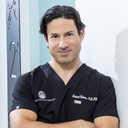I am a 40C and I desire to be an A cup. I get frequent sweating between my breasts and also rashes! My rash left a scar between my boobs. I feel self conscious about my boobs and I would feel better if I were an A cup. My bras are super uncomfortable and I have to go up a number on my bra every year! I just want an A cup :(
Answers (16)
From board-certified doctors and trusted medical professionals
Dr. Kenneth Hughes, MD

Dr. Kenneth Hughes, MD
Board Certified Plastic Surgeon
Answer
Dr. Scott C. Lindsay, DO

Dr. Scott C. Lindsay, DO
Board Certified Plastic Surgeon
Answer
Dr. Robert Cohen, MD

Dr. Robert Cohen, MD
Board Certified Plastic Surgeon
Answer
Dr. Gary M. Horndeski, MD

Dr. Gary M. Horndeski, MD
Board Certified Plastic Surgeon
Answer
Dr. Donovan Rosas, MD

Dr. Donovan Rosas, MD
Board Certified Plastic Surgeon
Answer
Dr. Daniel Barrett, MD

Dr. Daniel Barrett, MD
Board Certified Plastic Surgeon
Answer
Dr. Daniel Zeichner, MD
Dr. Daniel Zeichner, MD
Board Certified Plastic Surgeon
Answer
Dr. Robin A. Sykes, MD
Dr. Robin A. Sykes, MD
Board Certified Plastic Surgeon
Answer
Dr. Brian A. Pinsky, MD, FACS
Dr. Brian A. Pinsky, MD, FACS
Board Certified Plastic Surgeon
Answer
Dr. Robert Najera, MD
Dr. Robert Najera, MD
Board Certified Plastic Surgeon
Answer
More Breast Reduction Questions
See all Breast Reduction Q&AWE SEND PRETTY
EMAILS
What’s trending? Who’s turning heads? Which TikTok myths need busting? We’ve got you. No fluff, no gatekeeping—just real talk. Get our free, unfiltered newsletter.